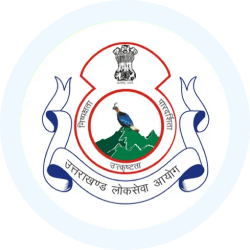UKPSC Monthly Current Affairs: April 2025 | Monthly Current Affairs UKPSC - UKPSC (Uttarakhand) PDF Download
Procession of Shiva Idol to Kedarnath Shrine
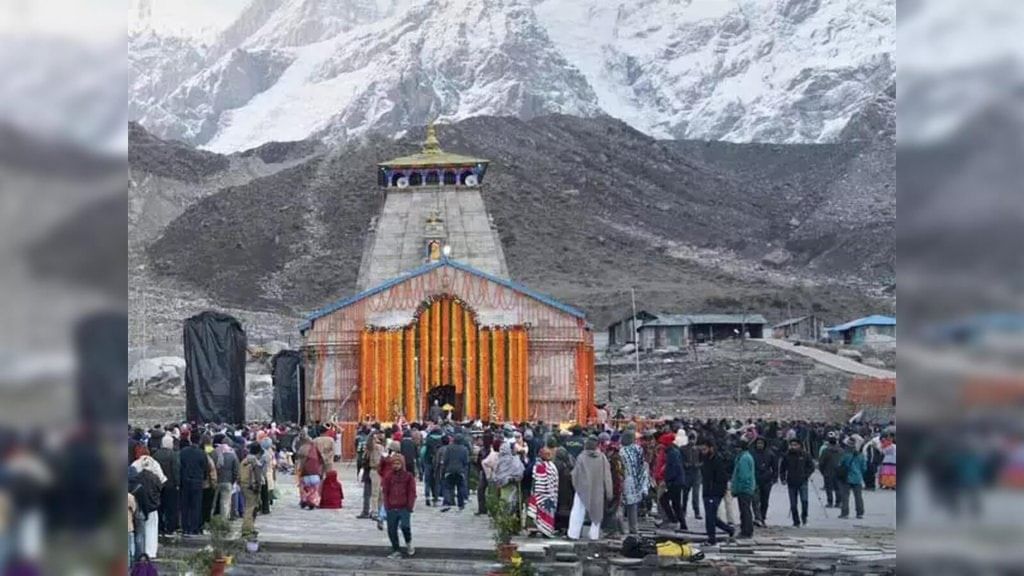 Shiva Procession
Shiva Procession
The idol of Lord Shiva, adorned with flowers and carried in a palanquin, has set off from its winter residence in Ukhimath. This sacred site is scheduled to welcome visitors on May 2, 2025.
Key Points
The Ritual:
Char Dham Yatra:
- Yamunotri Dha:
- Location: Uttarkashi district. Dedicated to: Goddess Yamuna. It is the second-most sacred river in India after the Ganges.
- Gangotri Dham:
- Location: Uttarkashi district. Dedicated to: Goddess Ganga. Considered the most sacred of all Indian rivers.
- Kedarnath Dham is situated in the Rudraprayag district and is dedicated to Lord Shiva. It lies on the banks of the Mandakini River.
- It is one of the 12 Jyotirlingas in India, which are divine representations of Lord Shiva.
- Badrinath Dham:
- Location: Chamoli district. Home to the sacred Badrinarayan Temple. Dedicated to: Lord Vishnu. One of the holy shrines for Vaishnavites.
Taj Mahal Conservation Efforts
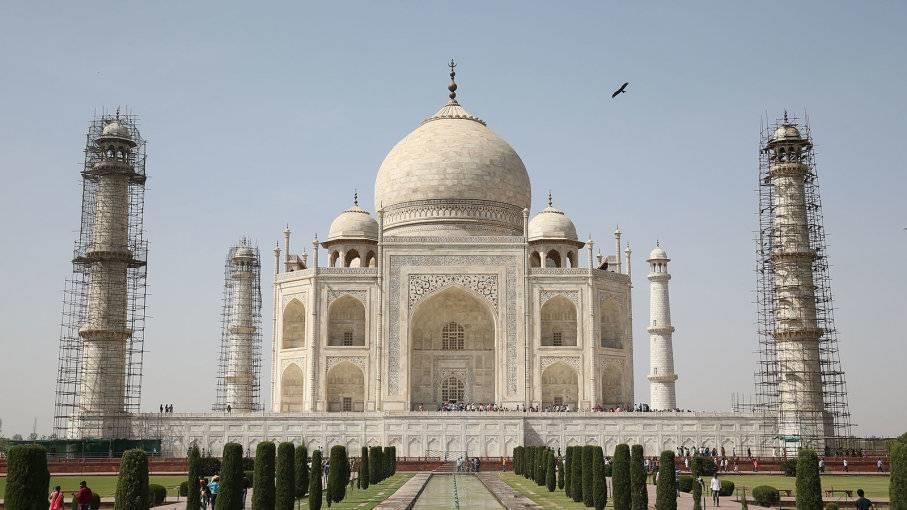 Taj Mahal Protection
Taj Mahal Protection
Why in news?
The Supreme Court of India has directed the National Environmental Engineering Research Institute (NEERI) to investigate the impact of glass industries on the environment surrounding the Taj Mahal.
Details of the Court’s Directive:
- The court has requested NEERI to submit a report along with a timeline for the assessment.
- A specialized team will be created to evaluate the affected industries, assess pollution levels, and provide an interim report.
- If the glass industries are found to be polluting, the court is prepared to order their relocation.
This instruction comes after the Supreme Court's earlier criticism of the environmental measures implemented by the Taj Trapezium Zone (TTZ) Authority.
Taj Trapezium Zone (TTZ):
- The Taj Trapezium Zone is a protected area spanning 10,400 square kilometers around the Taj Mahal, established to protect the monument from environmental threats.
- It encompasses several historical sites, including the Taj Mahal, Agra Fort, and Fatehpur Sikri.
- The zone is named for its distinctive trapezoidal shape.
- Industries within the TTZ are classified as red, orange, green, or white, depending on their pollution levels.
- The TTZ framework is responsible for regulating pollution, monitoring air quality, and safeguarding the environmental integrity of the Taj Mahal.
Taj Mahal
- Commissioned by: Mughal emperor Shah Jahan
- In memory of: His wife Mumtaz Mahal
- Architect: Ustad Ahmad Lahori
- Construction period: 1632 AD to 1648 AD
- Location: Agra, Uttar Pradesh, India
- Materials used: White marble, red sandstone, and various gemstones for inlay work
Historical Significance
- The Taj Mahal is a UNESCO World Heritage Site, recognized in 1983 for its cultural and historical importance.
- It is considered one of the Seven Wonders of the World due to its architectural beauty and historical significance.
Conservation Efforts
- The Taj Mahal was declared a monument of national importance in 1920, and its conservation is managed by the Archaeological Survey of India (ASI).
- It is protected under the Ancient Monuments and Archaeological Sites and Remains Act, 1958, and the site is regularly monitored and maintained to preserve its integrity.
- The Taj Mahal is also part of the Taj Trapezium Zone, which helps regulate the environment around the monument to prevent pollution and degradation.
Role of the Council of Scientific and Industrial Research (CSIR)
- NEERI, under the CSIR, plays a crucial role in environmental management and pollution control through research and policy development.
- Established in 1958, NEERI focuses on sustainable development and has regional laboratories across India to address local environmental issues.
SEFCO-2025: Shaping the Energy Future
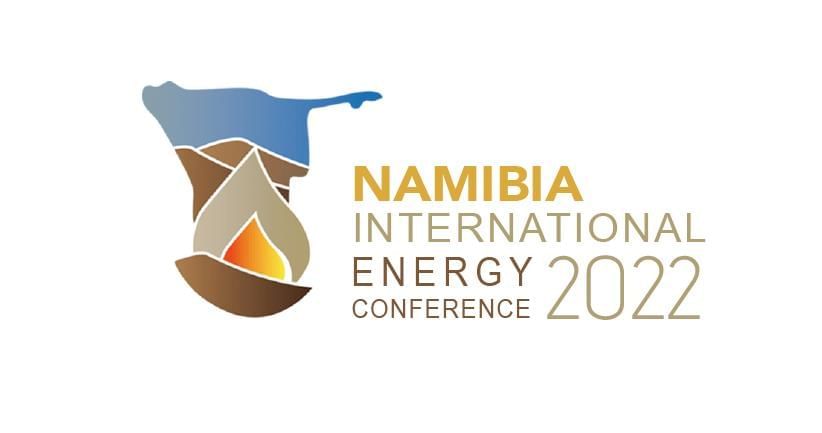 Energy Conference 2025
Energy Conference 2025
The Indian Institute of Petroleum (CSIR-IIP), Dehradun, is set to host the International Conference “Shaping the Energy Future: Challenges and Opportunities” (SEFCO-2025) from 23rd to 25th April 2025.
Overview of SEFCO
- The first SEFCO Conference was organised by CSIR-IIP in 2017.
- SEFCO focuses on developing solutions for sustainable energy by addressing challenges in the energy and chemical sectors.
- The 2025 edition marks the 7th SEFCO Conference and has gained international recognition.
- The theme for SEFCO-2025 is “Catalysing a Sustainable Future with Affordable Energy and Chemicals.”
Key Features of SEFCO-2025
- The conference spans three days and features talks from renowned national and international experts, including young scientists and researchers from academia and industry.
- Over 300 delegates from various national and international organisations are expected to attend.
- An exhibition will showcase CSIR-IIP’s technological innovations and research milestones.
- SEFCO-2025 has received strong support from key public and private sector organisations, including:
- Oil and Natural Gas Corporation (ONGC)
- Engineers India Limited (EIL)
- Bharat Petroleum Corporation Limited (BPCL)
- CRISTOL, Indian Oil Corporation Limited (IOCL)
- GAIL, AIRBUS, Numaligarh Refinery Limited (NRL)
- Chennai Petroleum Corporation Limited (CPCL)
- R L Solutions
Council of Scientific and Industrial Research (CSIR)
- CSIR is one of the largest research and development organisations in India, established in 1942.
- It operates as an autonomous body under the Societies Registration Act, 1860, and is funded by the Ministry of Science and Technology.
- CSIR conducts research in various fields, including geophysics, environmental engineering, and more.
FSSAI Advocates for Healthier Diet Along Char Dham Yatra
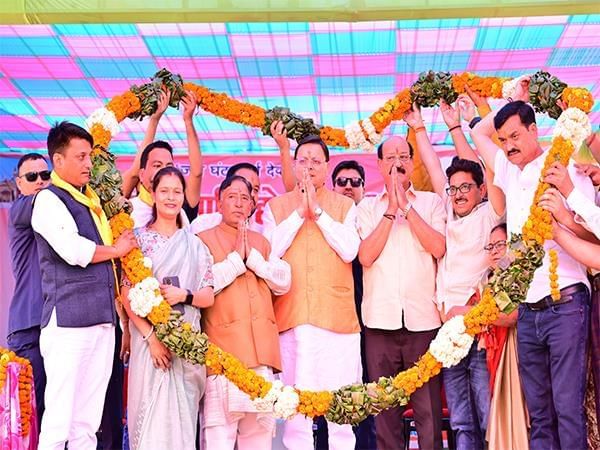 Healthier Eating
Healthier Eating
Food Safety and Standards Authority of India (FSSAI)
The Uttarakhand government, in collaboration with the Food Safety and Standards Authority of India (FSSAI), has initiated a campaign aimed at educating food vendors and restaurants along the Char Dham Yatra route to reduce the levels of salt, sugar, and oil in the meals they prepare.
Training workshops as part of this campaign have been conducted in various locations, including:
- Uttarkashi
- Chamoli
- Rudraprayag
- Rishikesh
- Haridwar
- Chamba
- Srinagar
This initiative aligns with the broader goal of promoting healthier dietary practices and ensuring the well-being of pilgrims during the Char Dham Yatra.
Key Highlights of the Campaign:
- Aim: To mitigate health risks such as heart attacks and respiratory issues for pilgrims during the Char Dham Yatra by promoting healthier cooking and eating practices.
- Fit India Movement: The initiative to reduce salt intake is part of the Prime Minister's call for a 10% reduction in the use of salt, sugar, and oil in food preparations.
- Implementation and Monitoring Agencies:
- Food Safety and Drug Administration (FDA)
- District administration, Uttarakhand
- Dietary Guidelines for Food Vendors:
- Decrease the use of salt, sugar, and oil in meals.
- Avoid foods high in papads, pickles, and MSG (monosodium glutamate).
- MSG, also known as Ajinomoto, is a common flavour enhancer that adds the umami taste. It is the sodium salt of glutamic acid, an amino acid found naturally in many foods.
- Use natural sweeteners like dates and fruits instead of refined sugars.
- Medical and Health Arrangements:
- Health screenings will be compulsory for pilgrims aged over 50.
- In 2024, health screenings are planned for 9.5 lakh individuals.
About FSSAI:
- The Food Safety and Standards Authority of India (FSSAI) is an autonomous body established under the Food Safety and Standards Act of 2006.
- Its primary objective is to protect and promote public health by regulating food safety and quality in India. FSSAI operates under the Ministry of Health & Family Welfare.
- FSSAI's headquarters is located in New Delhi, with regional offices spread across eight zones in the country.
- The Chairperson and Chief Executive Officer of FSSAI are appointed by the central government. The Chairperson holds a significant position, equivalent to Secretary to the Government of India.
Functions and Powers of FSSAI:
- Formulating regulations and standards for food products and additives.
- Granting licences and registrations to food businesses.
- Enforcing food safety laws and regulations.
- Monitoring and supervising food safety and quality.
- Conducting risk assessments and scientific research on food safety issues.
- Providing training and raising awareness about food safety and hygiene.
- Promoting food fortification and organic food.
- Coordinating with other agencies and stakeholders on food safety matters.
Events and Indexes:
- World Food Safety Day
- State Food Safety Index
Rishikesh-Karnaprayag Rail Link Project
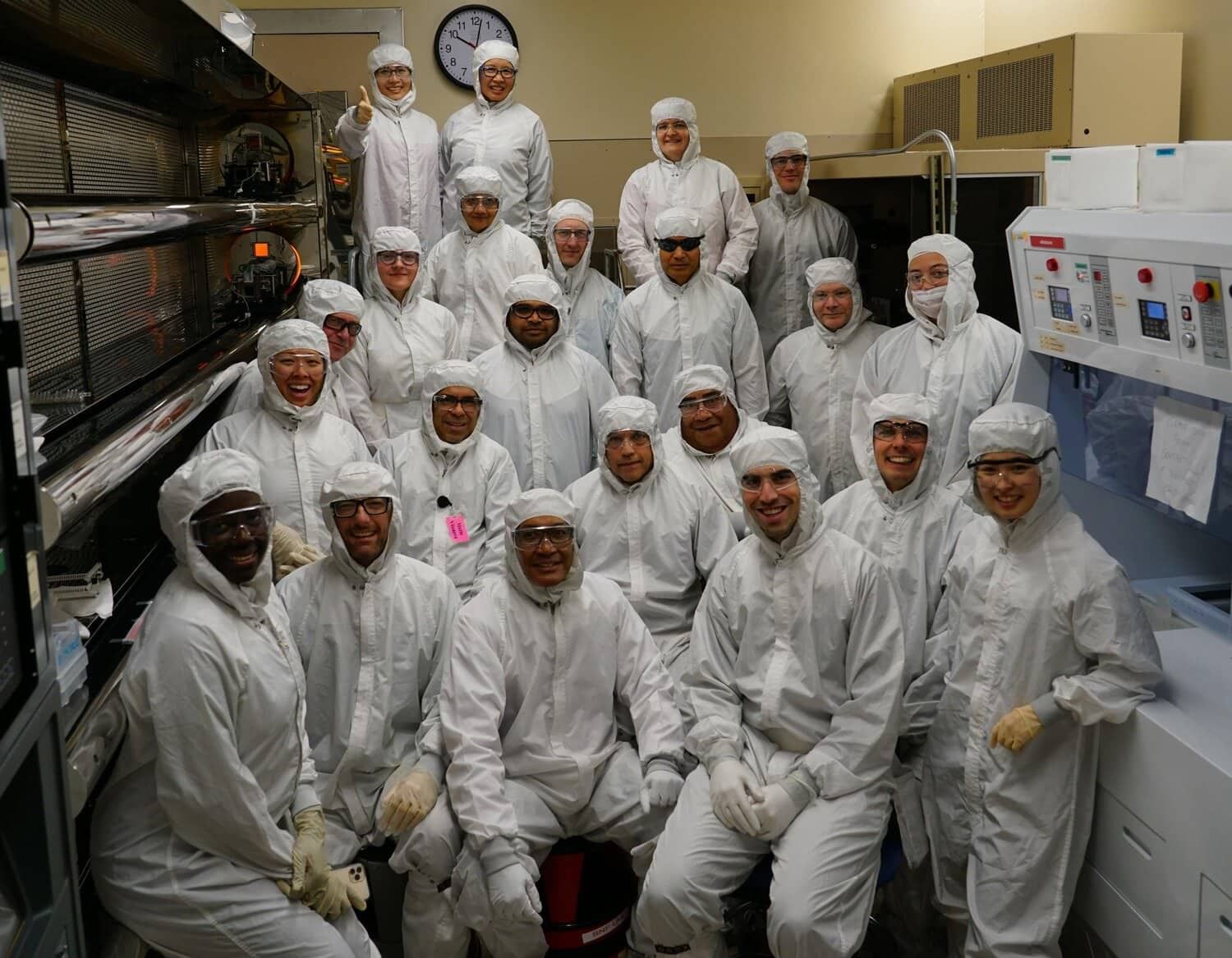 Rail Connectivity Project
Rail Connectivity Project
On April 16, 2025, the Union Railway Minister and the Chief Minister of Uttarakhand participated in the groundbreaking ceremony for India's longest rail tunnel in Janasu, Uttarakhand.
Part of Rishikesh–Karnaprayag Rail Project:
- The 14.57-km-long Tunnel 8 is located between Devprayag and Janasu.
- This tunnel is an important section of the 125-km Rishikesh–Karnaprayag Broad Gauge Rail Line.
- The main goal of this project is to improve connectivity across five districts in the Himalayas:
- Devprayag
- Srinagar
- Rudraprayag
- Gauchar
- Karnaprayag
- This project is notable because it uses Tunnel Boring Machine (TBM) technology, which is being used for the first time in mountainous areas of India.
Technical and Logistical Challenges Overcome:
- TBM components weighing 165 MT were moved from Mundra Port along narrow Himalayan roads and over old bridges.
- The tunnel goes through Seismic Zone IV, which requires advanced design and careful geological investigation due to the potential for earthquakes.
Impact and Broader Significance:
- Over 83% of the 125-km alignment runs through tunnels, involving a total of 213 km of tunnelling across main and escape routes.
- Once completed, the project will reduce travel time, ensure all-weather access, and boost tourism and regional economy in Uttarakhand.
- It also represents a major leap toward realising the Char Dham Rail Connectivity Initiative under the government’s Viksit Bharat 2047 vision.
Objectives of Vision India@2047
- The initiative aims for a USD 30 trillion economy with a per-capita income between USD 18,000-20,000.
- Focus on building world-class infrastructure and services in both rural and urban areas.
- Promoting a digital economy and governance while reducing unnecessary government interference in citizens' lives.
- Developing global champions in every sector and boosting local industry and innovation.
- Achieving self-sufficiency in the defence and space sectors and enhancing India’s global standing.
- Encouraging green growth and climate action through increased renewable energy capacity and reduced carbon emissions.
- Empowering youth with skills and education and creating more job opportunities.
- Collaborating with foreign R&D organisations to establish top labs in India and positioning Indian institutions among the global top 100.
Campaign Against Illegal Residents in Uttarakhand
On April 17, 2025, the Chief Minister of Uttarakhand directed the police to initiate a campaign to identify and take action against individuals residing illegally in the state using fake identification documents.
Reasons for the Initiative
- The Chief Minister emphasized the need to intensify efforts against the drug mafia and individuals disrupting law and order.
- He expressed concern over delays in filing First Information Reports (FIRs) for cybercrime cases and requested updates on these incidents.
- The CM urged the police to enhance their response to complaints and called for an improved work culture within the police department to foster public trust and increase efficiency.
Silkyara Tunnel in Uttarakhand
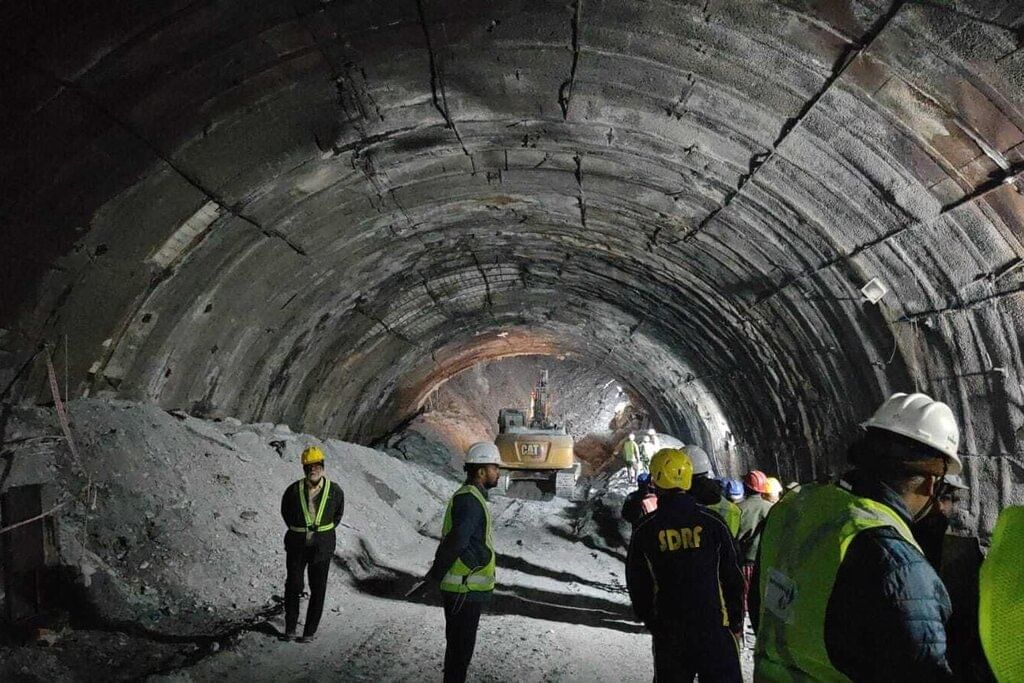 Silkyara Tunnel Completion
Silkyara Tunnel Completion
- On April 16, 2025, Uttarakhand successfully completed the excavation of the 4.53-km long tunnel, which is named after the local deity Baba Baukhnag.
- The Chief Minister inaugurated the Baba Baukhnag temple at the entrance of the Silkyara Tunnel, praising the tunnel's completion as a testament to advanced engineering, faith, and dedication.
- The National Highways and Infrastructure Development Corporation Ltd (NHIDCL), under the Ministry of Road Transport & Highways, Government of India, awarded the construction contract to the Navayuga Engineering Company based in Hyderabad.
Infrastructure and Connectivity
- The double-lane tunnel is a crucial part of the Char Dham all-weather road project.
- This significant infrastructure development is estimated to cost Rs 1,384 crore.
- The tunnel will shorten the distance between Gangotri and Yamunotri by 25 km, greatly improving regional connectivity.
Introduction of 'Antar' Initiative
On April 7, 2025, the 'Antar' initiative was launched by the National Institute for the Empowerment of Persons with Visual Disabilities (Divyangjan) in Dehradun, in collaboration with the National Association for the Blind (NAB) in New Delhi.
Purpose of 'Antar'
- 'Antar' is designed to create a sensory dark room that replicates everyday situations for individuals with visual impairments.
- The facility enables sighted people to engage in activities in complete darkness, fostering an understanding of the difficulties faced by those with blindness or low vision.
- This initiative aims to bridge the perceptual gap between the general public and the experiences of visually impaired individuals, promoting inclusion and awareness.
Implementation of the 'Enable Inclusion' App
- The National Institute for the Empowerment of Persons with Visual Impairment (NIEPVD) will implement the 'Enable Inclusion' App, developed by Amar Seva Sangam, for early detection, intervention, and tracking of children with developmental disabilities.
- NIEPVD will enhance the app's accessibility for users with visual impairments, integrating its expertise in visual disabilities.
- The app will offer personalized support through tele-counseling, rehabilitation planning, and early intervention, advancing the vision of accessible and inclusive tech-driven empowerment for persons with disabilities across India.
Background on NIEPVD
- The National Institute for the Empowerment of Persons with Visual Impairment (NIEPVD) has been working since 1943 for the education, training, rehabilitation, and empowerment of the visually impaired under the Department of Empowerment of Persons with Disabilities (DEPwD).
- NIEPVD established a Regional Centre in Chennai in 1988 to serve the Southern Region and coordinates four Central Rehabilitation Centres (CRCs) at Sundernagar (H.P.), Gorakhpur (U.P.), and Jaipur (Rajasthan) to provide rehabilitation and skill development services for persons with disabilities.
Other Initiatives for Persons with Disabilities
- Rights of Persons with Disabilities Act, 2016: Aims to protect and promote the rights of persons with disabilities (PwDs).
- United Nations Convention on the Rights of Persons with Disabilities (UNCRPD): Aims to implement the convention, which India ratified in 2007.
- A person with a benchmark disability is defined as someone with at least 40% of a specified disability.
- Unique Disability Identification Portal:. project to create a National Database for PwDs and issue Unique Disability Identity Cards to each PwD.
- DeenDayal Disabled Rehabilitation Scheme (DDRS): This scheme provides financial assistance to NGOs for the education and rehabilitation of persons with disabilities since 1999.
- National Fellowship for Students with Disabilities: Aims to increase opportunities for students with disabilities for pursuing higher education, granting 200 fellowships per year.
Chintan Shivir 2025 for Marginalised Communities
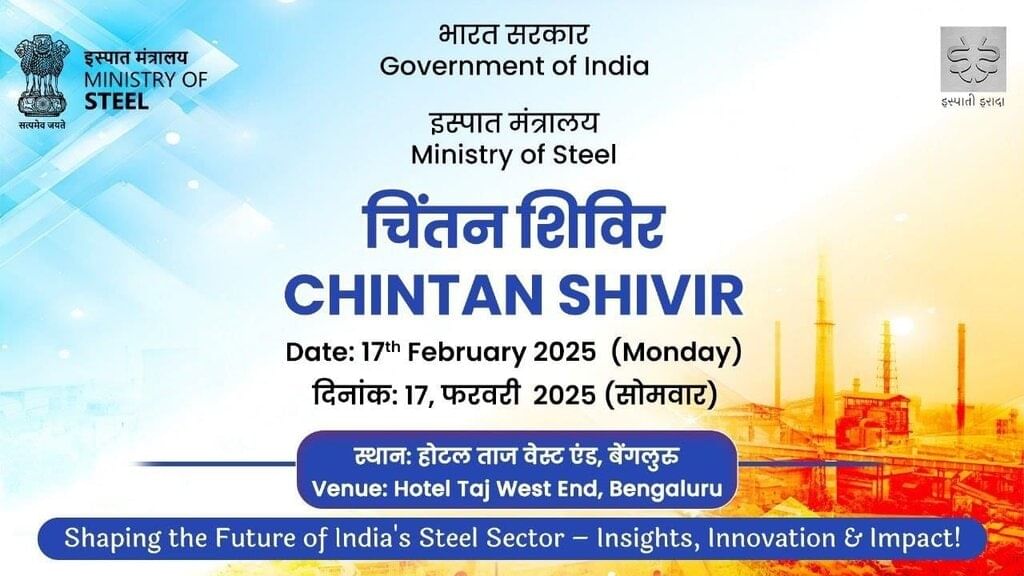 Social Justice Summit
Social Justice Summit
The Union Minister of Social Justice and Empowerment has initiated the Chintan Shivir 2025 in Dehradun, Uttarakhand. This two-day event aims to strengthen the collaboration between the Centre and States to promote social justice for marginalised communities.
Key Focus Areas
- Education
- Economic Development
- Social Protection
- Accessibility
Assistance to Disabled Persons (ADIP)
- The Department of Empowerment of Persons with Disabilities (DEPwD) reported advancements in various initiatives, including scholarships for Persons with Disabilities (PWDs), skill development programs, and efforts to enhance digital accessibility.
- States shared their successful practices, such as conducting mobile assessment camps, improving inclusive school infrastructure, and developing accessible transport models.
PM-YASASVI Scheme
The PM-YSASVI Scheme, launched by the Ministry of Social Justice and Empowerment, aims to provide financial assistance for quality education to marginalised students, including those from OBC, EBC, and DNT communities.
- Eligibility: The scheme is open to students with a family income of up to Rs 2.5 lakh per annum.
- Sub-Schemes:The scheme includes various sub-schemes, such as:
- Pre-Matric Scholarship: Provides Rs. 4,000 annual academic allowance for families earning below Rs. 2.5 lakh.
- Post-Matric Scholarship: Offers financial support ranging from Rs. 5,000 to Rs. 20,000 based on the type of course.
- College Education: Covers full financial support for top students, including tuition, living expenses, and educational materials.
- Hostels: Offers accommodation facilities near government schools and institutions.
- SEED Scheme: The Scheme for Economic Empowerment of Denotified/Nomadic/Semi-Nomadic (SEED) communities, launched in February 2022, aims to uplift these communities through various initiatives, including free competitive exam coaching, health insurance for families, livelihood initiatives, and financial assistance for housing.
Livelihood and Economic Inclusion
- The Ministry evaluated the effectiveness of various initiatives in asset creation, cluster development, and entrepreneurship, with States presenting successful models.
- Discussions also addressed the need for modernising sanitation practices, eliminating manual scavenging, and ensuring the dignity of sanitation workers, particularly women, through the use of technology and improved coordination.
Equine Influenza in Rudraprayag, Uttarakhand
Equine influenza, commonly known as "horse flu," is a rapidly spreading respiratory illness that affects horses, caused by two subtypes of the influenza A virus: H3N8 and H7N7. The virus spreads easily through direct contact with infected animals and contaminated environments.
Although equine influenza is rarely fatal, it can lead to severe complications, especially in young foals, such as secondary bacterial infections and prolonged respiratory issues.
In response to cases of equine influenza detected in horses and mules in two villages of Rudraprayag, the Uttarakhand government has initiated measures to prevent its spread ahead of the Char Dham Yatra pilgrimage season.
Government Response and Action Plan
- The Uttarakhand government, led by the State Animal Husbandry Minister, is taking proactive steps to contain equine influenza during the upcoming pilgrimage season.
- A review meeting was conducted to assess the situation and formulate a response plan.
- Officials have been instructed to prioritize screening all horses and mules before they are allowed to participate in the yatra.
- Horses and mules coming to Uttarakhand from other states must have a valid health certificate and a negative equine influenza test report.
Char Dham Yatra Schedule 2025
The Char Dham Yatra in Uttarakhand is set to begin in 2025 with the opening of Gangotri Dham on 30th April. This will be followed by the opening of Yamunotri on 2nd May, and Kedarnath on 4th May.
Vibrant Villages Programme-II (VVP-II)
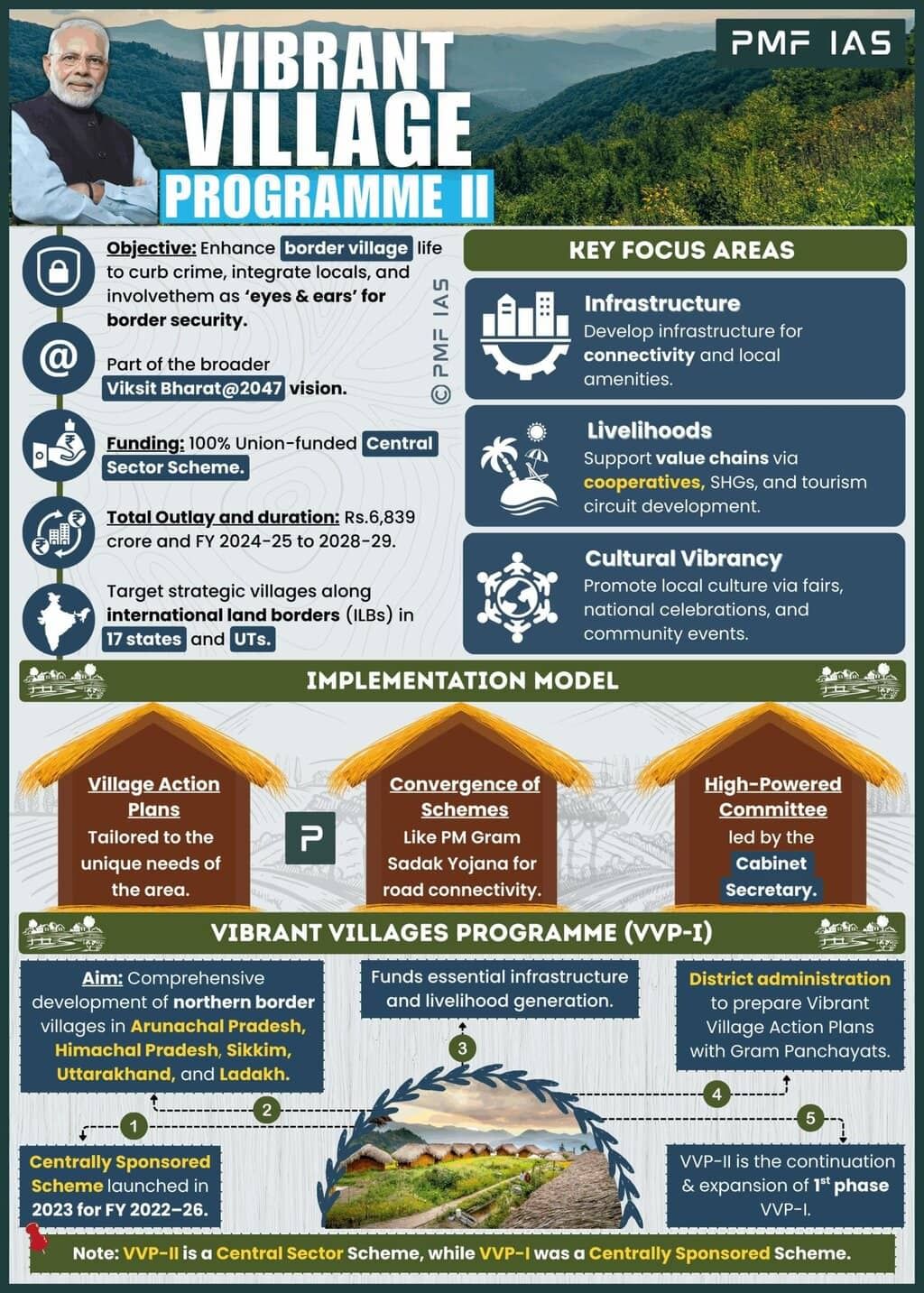 Border Village Development
Border Village Development
Why in News?
The Union Cabinet, headed by Prime Minister Narendra Modi, has given the green light to the Vibrant Villages Programme–II (VVP-II) as a Central Sector Scheme for the financial years 2024–25 to 2028–29.
This initiative is in line with the vision of Viksit Bharat@2047, which aims for ‘Safe, Secured & Vibrant Land Borders.’
- About the Scheme: The scheme focuses on the comprehensive development of villages located near International Land Borders (ILBs), with the exception of the Northern border, which is already covered by other initiatives.
- Total Outlay: ₹6,839 crore.
- Implementation Period: Until FY 2028–29.
- States/UTs covered: Arunachal Pradesh, Assam, Bihar, Gujarat, Jammu & Kashmir (UT), Ladakh (UT), Manipur, Meghalaya, Mizoram, Nagaland, Punjab, Rajasthan, Sikkim, Tripura, Uttarakhand, Uttar Pradesh, West Bengal.
Objective of the Scheme:
- To enhance living conditions in key border villages.
- To provide sufficient employment opportunities for residents.
- To ensure prosperous and secure international borders.
- To address trans-border crime in sensitive areas.
- To integrate border communities with the national mainstream.
- To empower villagers to act as ‘eyes and ears’ for border security, thereby improving internal safety.
Key Provisions under VVP-II:
- Development of infrastructure in individual villages or clusters.
- Enhancement of value chains through cooperatives, Self-Help Groups (SHGs), etc.
- Border-specific outreach activities to engage and uplift local communities.
- Establishment of educational facilities, including SMART classes.
- Creation of tourism circuits to stimulate the local economy and promote cultural awareness.
- Implementation of projects aimed at generating diverse and sustainable job opportunities in border areas.
Implementation Approach:
- Village Action Plans: These plans will be developed collaboratively, tailored to the specific needs of the state, village, and border context.
- PMGSY-IV: Road connectivity will be enhanced through the Ministry of Rural Development.
- High-Powered Committee:. committee chaired by the Cabinet Secretary will facilitate relaxations in implementation guidelines.
Saturation Focus (Thematic Areas): The programme aims to ensure that all individuals and households in selected villages benefit fully from existing welfare schemes by integrating various schemes.
Basic Services: The plan seeks to ensure that all villages in these areas have access to four essential services:
- All-weather road connectivity
- Telecom connectivity
- Television connectivity
- Electrification
Use of Technology: The implementation will be supported by digital tools for integrated planning and tracking.
Reopening of Madrasahs in Uttarakhand
 Madrasah Reopening
Madrasah Reopening
On April 3, 2025, the High Court of Uttarakhand ordered the government to unseal a building that had been closed for operating "illegally," provided that the institution does not run any school without state government recognition.
Government Action on Madrasahs:
- The State government shut down over 136 madrasahs for allegedly operating without proper affiliation and failing to meet the madrasah board's guidelines.
- The Chief Minister initiated an investigation into the funding of these institutions.
High Court's Interim Relief:
- The court permitted the reopening of Madarsa Enamul Uloom in Dehradun.
- Madrasah owners challenged the sealing, arguing that they ran a religious school under a registered society and that the State lacked the legal authority to seal the premises.
- The court asked the State government to clarify the legal reasons and procedures behind the sealing of the madrasah's property.
Court's Observations on Due Process:
- The High Court noted that the madrasah was sealed without a show-cause notice, and the petitioners were not given an opportunity for a hearing.
- The court ruled that the property should remain unsealed until the next hearing, provided the petitioners agree not to operate a madrasah or school without state government recognition.
Madrasas
- A madrasah is an Arabic term for an educational institution.
- In the early days of Islam, madrasahs were simply educational institutions. By the 10th century, they had evolved into distinct establishments offering both religious and secular education across the Islamic world.
- The first madrasahs emerged in regions like Khorasan and Transoxania, which today comprise parts of eastern and northern Iran, central Asia, and Afghanistan. Some of these larger institutions even provided housing for students, particularly those from disadvantaged backgrounds.
- Madrasahs that are recognized by the government operate under state boards. In contrast, those that are unrecognized typically follow curricula set by prominent seminaries such as Darul Uloom Nadwatul Ulama and Darul Uloom Deoband.
Naini Lake
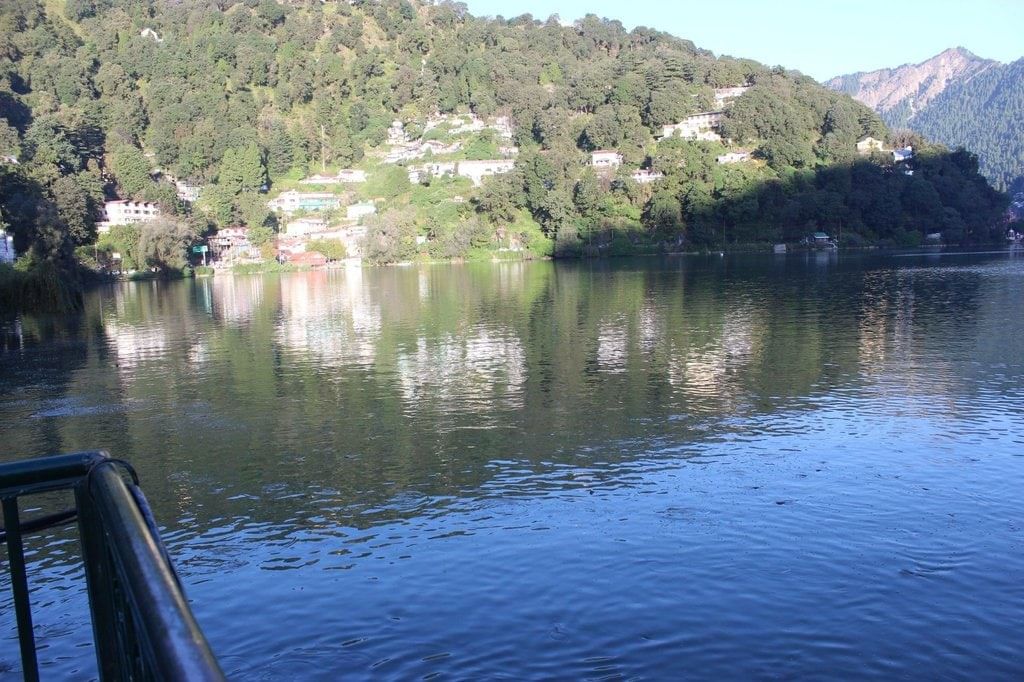 Naini Lake Crisis
Naini Lake Crisis
Naini Lake, a major attraction in Nainital, is currently facing a concerning situation as its water level has dropped to 4.7 feet, the lowest it has been in five years.
Concerns Over Drinking Water Scarcity:
- Experts are warning that the water level in Naini Lake may fall below the "zero level", which raises serious concerns about potential drinking water shortages as we approach summer.
- The term "zero level" refers to a point where the water level is below the normal gauge level based on historical data, not an indication that the lake is completely dry.
Water Extraction and Declining Levels:
- Naini Lake has a deepest point of 89 feet and a gauge level of 12 feet.
- The Uttarakhand Jal Sansthan extracts 10 million litres of water daily from the lake to supply drinking water to Nainital.
- The decline in water levels has been exacerbated by reduced snowfall and rainfall during the winter, along with ongoing long-term maintenance issues.
Historical and Geographical Significance:
- Naini Lake is a natural, kidney-shaped lake nestled amidst seven hills in Nainital.
- The lake was discovered in the mid-19th century by an English businessman, P. Barron, which led to the development of Nainital as a British hill station.
Rising Demand and Impact on the Lake:
- Environmental scientists have noted that in 2024, Naini Lake supplied 76% of the city’s water.
- The increase in population and commercial activities has had a detrimental impact on the lake’s water levels.
Human-Induced Degradation:
- A report in 2017 highlighted that Naini Lake is facing significant human-made disturbances, more than any other lake in the Kumaon region.
- Problems such as unplanned construction and the degradation of recharge zones are contributing to the lake’s decline.
- The proliferation of concrete structures has reduced rainwater infiltration, exacerbating water shortages during low-rainfall years.
- Additionally, dumping debris into Sukhatal Lake, a vital recharge source, has caused it to shrink from its original two-hectare area.
- Encroachments and illegal constructions have further diminished the lake’s catchment area, with houses and hotels expanding too close to the lake.
Pollution and Civic Issues:
- Pollution in Naini Lake is being aggravated by the discharge of untreated wastewater and improper solid waste disposal.
- The inadequacy of sewer systems has led to sewage overflow into stormwater drains, which eventually discharge into the lake.
Changing Weather Patterns and Climate Impact:
- Climate change has significantly altered weather patterns in Uttarakhand.
- A study by Climate Trends indicated that between 1970 and 2022, the annual mean temperatures in the state increased by 1.5°C.
- This rise in temperature has influenced rainfall and snowfall patterns adversely.
- For instance, annual rainfall decreased from 2,400 mm in 2022 to 2,000 mm in 2024.
- Nainital, in particular, experienced a significant drop in rainfall, receiving only 107 mm of rain from January to March 2025, which is considerably lower than previous years.
- Furthermore, while the region enjoyed snowfall on four days in winter 2022, there was no snowfall in 2025.
- Historically, Naini Lake reached the zero level only twice in the 1900s, but it has surpassed that level more than ten times since the year 2000.
Need for Rejuvenation and Conservation Efforts:
- There have been various legal petitions aimed at protecting Naini Lake, including a notable ruling in 1993 that prohibited commercial complexes in Nainital.
- Despite this, unregulated construction activities, such as the establishment of homestays and building on wetlands, continue to pose a threat to the lake’s ecosystem.
Public Interest Litigation (PIL):
- In 2021, concerns regarding the Sukhatal Lake revamp project were raised, leading to a case in the Uttarakhand High Court.
- The High Court ordered a halt to the construction in November 2022, but work resumed in 2024 under a new beautification plan.
Uttarakhand Renames 18 Places to Honor Cultural Heritage
The state of Uttarakhand has decided to rename 18 locations across the districts of Haridwar, Dehradun, Nainital, and Udham Singh Nagar.
Purpose of the Renaming:
According to the Chief Minister, the renaming initiative aims to respect public sentiments and preserve Indian culture and heritage. The new names are intended to inspire people by acknowledging influential figures who have significantly contributed to Indian culture.
Renamed Locations:
In Haridwar District:
- Aurangzebpur (Bhagwanpur block) is now Shivaji Nagar.
- Ghaziwali (Bahadrabad block) is now Arya Nagar.
- Chandpur (Bahadrabad block) is now Jyotiba Phule Nagar.
- Mohammedpur Jaat (Narsan block) is now Mohanpur Jaat.
- Khanpur Kursali (Narsan block) is now Ambedkar Nagar.
- Idrispur (Khanpur block) is now Nandpur.
- Khanpur (Khanpur block) is now Shree Krishnapur.
- Akbarpur Fazalpur (Roorkee) is now Vijay Nagar.
In Dehradun:
- Miyanwala is now Ramjiwala.
- Peerwala is now Kesri Nagar.
- Chandpur Khurd is now Prithviraj Nagar.
- Abdulpur is now Daksh Nagar.
In Nainital:
- Nawabi Road is now Atal Marg.
- Panchakki to IIT Road is now Guru Gowalkar Marg.
In Udham Singh Nagar:
- Sultanpur Patti Nagar Panchayat is now Kaushalyapuri.
FAQs on UKPSC Monthly Current Affairs: April 2025 - Monthly Current Affairs UKPSC - UKPSC (Uttarakhand)
| 1. What are the key components of UKPSC monthly current affairs that candidates should focus on? |  |
| 2. How can candidates effectively prepare for the UKPSC exams using monthly current affairs? |  |
| 3. Why is it important to stay updated with current affairs for UKPSC exams? |  |
| 4. What types of questions related to current affairs can candidates expect in the UKPSC exams? |  |
| 5. How can historical events be integrated into the study of current affairs for UKPSC examinations? |  |



